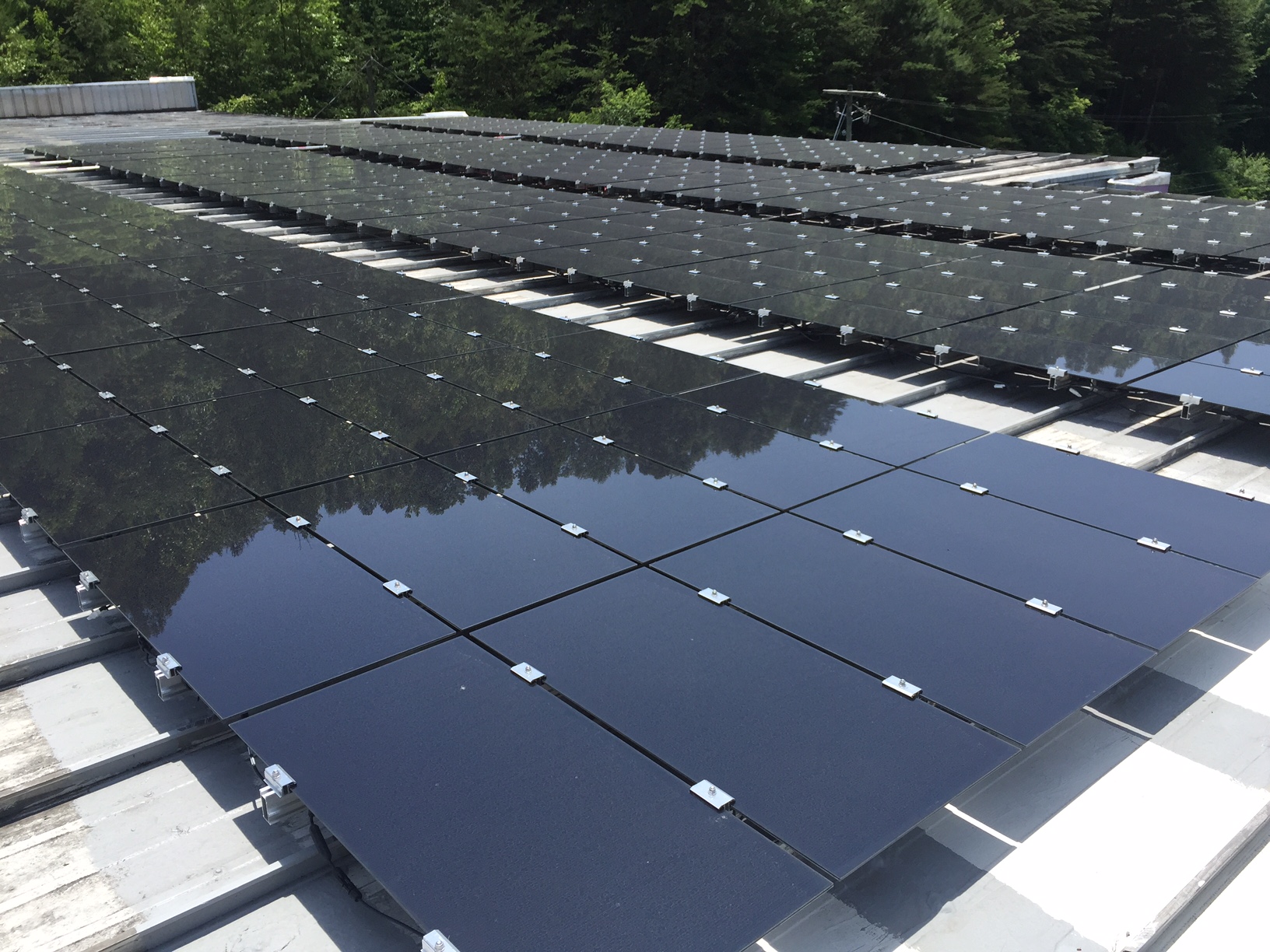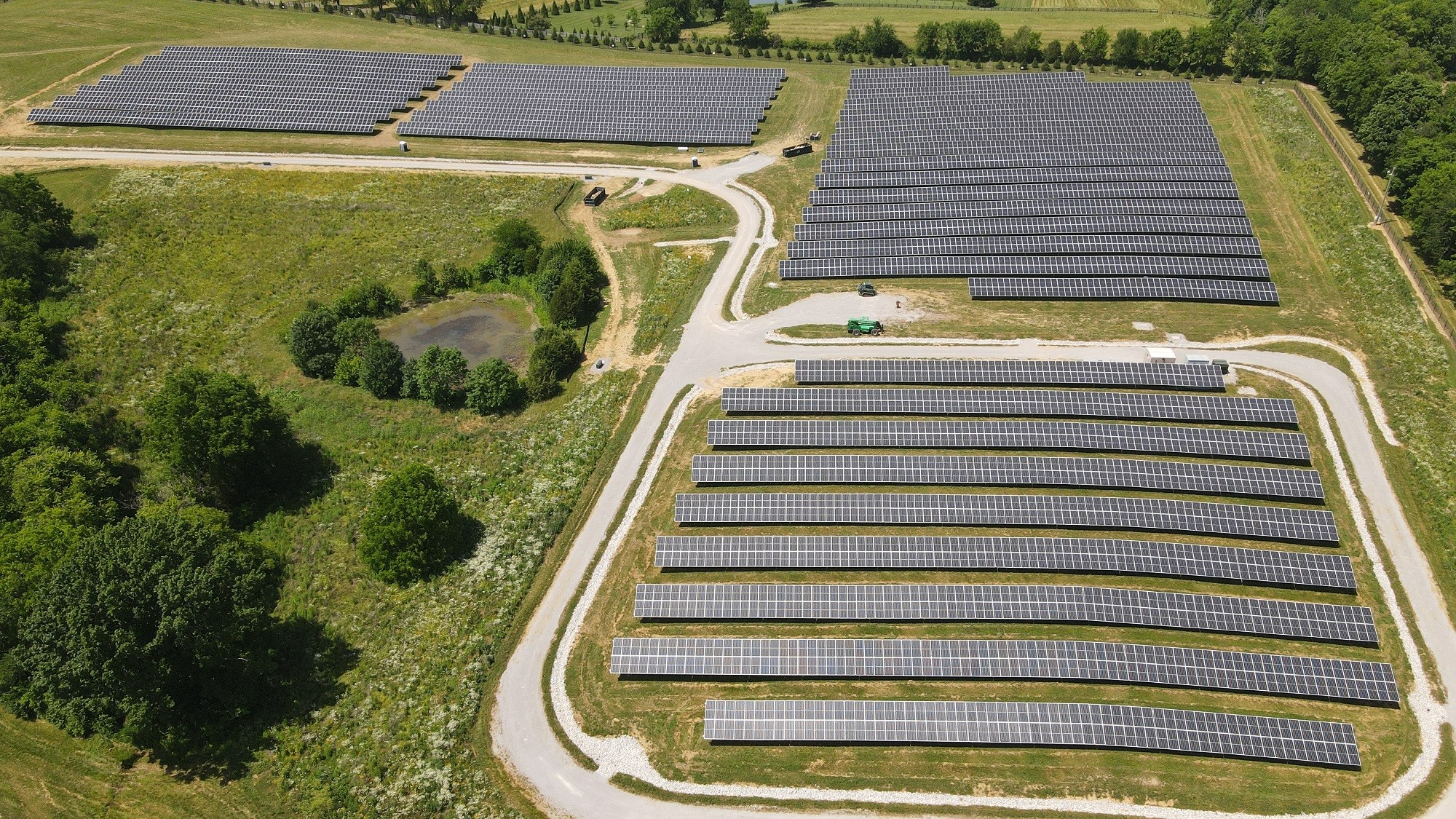America’s outdated power grid is overdue for upgrades and movement toward a clean energy future. The U.S. Department of Energy is providing leadership on investing in a grid that is stronger and more diversified than ever. D.O.E. explains that solar is an important part of adding resilience to the electric grid.
Solar Alliance has participated in supporting local utilities in this clean energy transition and continues to be a trusted partner. This video from LG&E and KU shows Solar Share community solar that Solar Alliance constructed.
Energy independence through a more resilient grid continues to be a top priority as local power companies face the challenges ahead. Industry and consumers require an increasingly electrified system that includes the ability to withstand huge power demands and the need for cleaner transportation options no longer dependent on fossil fuels.
Electricity generation is one of the U.S.’s largest areas for improvement, accounting for 32% of the nation’s carbon dioxide emissions in 2019. Organizations and companies like Solar Alliance are actively promoting strategies to reduce emissions from electricity generation. Utility-scale solar panels are a cost-effective and timely tool that can minimize carbon dioxide equivalent emissions while making the best business case for upgrades.
What Is Utility-Scale Solar?
Utility-scale solar is a method for reducing carbon dioxide emissions that is gaining traction in different areas of the U.S. Utility-scale solar facilities aim to decrease emissions by transforming solar energy into electricity, distributing it and storing it for future use more efficiently than ever before. Unlike some solar energy facilities, utility-scale plants feature panels that can adjust to the sun’s position and batteries to store electricity when sunlight is scarce.
Utility-scale solar plants are larger than any commercial or residential project, producing between 1 and 5 megawatts of power at a given facility. There are currently over 12,000 utility-scale solar projects in the U.S., combining to create roughly 47 gigawatts — with another 115 gigawatts worth of projects in development.
Rather than using the energy on-site, utility-scale solar plants sell their energy at a fixed rate to utility companies, which distribute it to their customers. Some plants also create power for massive corporate facilities. Utility-scale solar plants can offer affordable rates for buyers thanks to efficient, low-cost generation methods.
There are two primary forms of utility-scale energy generation — photovoltaic (PV) and concentrating solar power (CSP):
- Photovoltaic (PV): PV solar panels harvest the sun’s energy by utilizing semiconductors that naturally convert photons into electricity. Because PV panels naturally transform energy, plants don’t need to use the power they produce on-site. The sun’s photons activate the semiconductors’ electrons to send electricity to the grid. PV panels are space-efficient, allowing plants to produce utility-scale energy in a limited area.
- Concentrating solar power (CSP): CSP panels produce energy by using mirrors that concentrate the sun’s energy in a specific location. These mirrors direct thermal energy toward a steam turbine that produces electricity. The turbines are compatible with storage systems that allow plants to distribute electricity day and night.

Power Purchase Agreement
Utility-scale solar energy presents a path forward for a nation seeking to drastically reduce greenhouse gas emissions, but the logistics must be in place for the method to work to its full effect. That’s where a power purchase agreement (PPA) comes in. A PPA is an arrangement where a developer designs a utility-scale solar facility, acquires the necessary permits, helps secure financing and eventually installs the panels at the customer’s location.
Under a PPA, the developer sells the electricity it produces to the customer at a fixed rate that is usually lower than the customer’s other options. The client can then sell the electricity to their own residential and commercial customers. Developers can offer low fixed rates because utility-scale solar panels are inexpensive to install and efficiently produce a lot of electricity. The utility companies’ PPAs spread access to sustainable energy and result in lower prices for consumers.

Benefits of Utility-Scale Solar
Utility-scale solar power yields benefits for each party involved in the process, from developers to utility companies down to residential consumers. Utility-scale energy from Solar Alliance produces advantages like:
- Fixed rates and affordable prices: Utility-based solar power leads to stable electricity prices for both utility companies and their consumers. Energy producers have more access to and control over solar energy than other non-renewable resources like fossil fuels, meaning they can keep prices consistently low.
- Solar efficiency: Many solar panels that utility-scale plants offer have features that maximize their production. Some panels can turn to follow the sun throughout the day, while others are bifacial, with solar cells actively collecting photons on each side. It’s also easy to connect the equipment at a utility-scale plant with storage batteries for later distribution, making it possible to use the full amount of electricity produced.
- Corporate environmental stewardship: Combating climate change is a global responsibility, but businesses have the power to affect great change. It takes a lot of energy to run a business, so switching to utility-scale solar is a great way for companies to contribute to national emissions reduction goals. Businesses can also see an influx in customer engagement when they publically show their commitment to sustainability.
- Low operational costs: Utility-scale solar uses panels that naturally convert the sun’s rays into electricity. As a result, companies can produce energy without paying for other systems that aid in the process. Solar panels are self-sufficient, so there are few costs beyond installation.
- Minimal carbon emissions: Ultimately, the end goal of our utility-based solar offerings is to contribute to the fight against rising greenhouse gas levels. With utility-scale solar, the U.S. can reduce carbon emissions over time to hopefully avoid irreversible climate damage. If 20.3% of the world’s electricity production switched to utility-scale solar by 2050, we could avoid producing 42.3 gigatons of greenhouse gases. When that number increases to 25%, the greenhouse gas avoidance rises to 119.1 gigatons.
Ask About Utility-Scale Solar Today
Utility-scale solar panels create an energy system that provides ecological and financial benefits at every level. At Solar Alliance, we can provide the equipment you need to institute an effective utility-scale solar plan for your business. Our team will work with you to determine your energy needs and help you work toward your emissions goals. For more information on our solar panels, submit an online contact form and start a conversation with the Solar Alliance staff.




